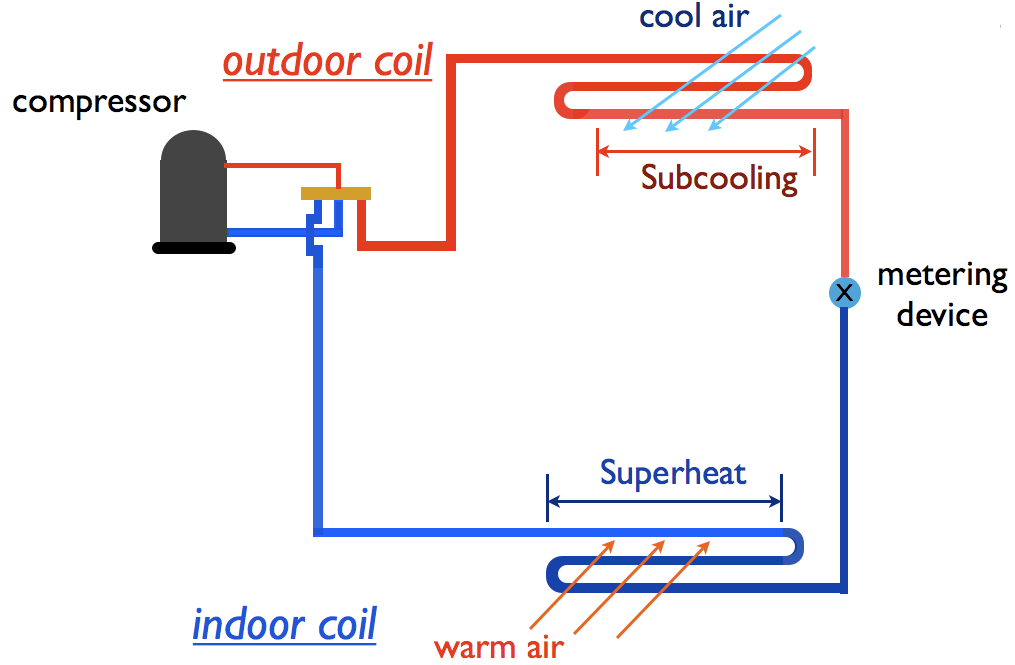Superheat and Subcooling
Superheat and subcooling are critical to the refrigeration cycle, but can be tough concepts to visualize.
Let’s start with superheat:
Boiling is when a liquid gains heat and transforms into a vapor.
Superheat occurs when that vapor is heated above its boiling point.
Let’s say that refrigerant boils at 40 degrees at a low pressure in the evaporator. The vaporized refrigerant is continuously heated, elevating its temperature to become a 50-degree vapor. This increase in temperatureabovethe boiling point is known as superheat. The formula to calculate superheat uses the current temperature and boiling point.

In this example, the superheat is 10-degrees.
Superheat is critical in HVAC because it ensures the liquid refrigerant is boiled off before it leaves the evaporator and heads to the compressor. Even small amounts of liquid can cause detrimental damage to the compressor in an HVAC system.
While evaporation and superheat occur in the evaporator, condensation and subcooling occur in the condenser.
Condensation is when a vapor loses heat and turns into a liquid, butsubcooling is when that liquid is cooled below the temperature at which it turns into a liquid.
Let’s use the same refrigerant with a high pressure boiling point of 120 degrees for the following example:
The refrigerant is a 140 degree vapor heading into the condenser. Once the condenser cools the refrigerant to 120 degrees, it will begin to turn back into a liquid. But the cooling does not stop there! Subcooling is also calculated using the boiling point (sometimes referred to as the condensing point) and current temperature.

So, if the condenser brings the refrigerant temperature down to 105 degrees, it has been subcooled by 15 degrees. In the refrigeration cycle, subcooling is an important process that ensures liquidrefrigerant enters the expansion device.
Key takeaways: superheat occurs in the evaporator to protect the compressor, and subcooling occurs in the condenser to protect the expansion device



No comments:
Post a Comment